What Are Some Interesting Facts About Acting?
(By Carmichael Phillip)

RELATED TOPICS:
What is Acting and Why is It Important?
Acting is both an art and a craft, blending creativity, emotion, and technical skill. While many people know actors for their performances, there is a lot more to acting than meets the eye. Here are some fascinating facts about acting that shed light on its complexity and appeal:
1. Acting Dates Back Thousands of Years
The origins of acting can be traced back to ancient Greece around 500 B.C. The first actors, known as hypokrites, were part of a religious festival dedicated to the god Dionysus. Over time, acting evolved from simple storytelling into the complex art form we know today, encompassing both dramatic and comedic performances.
2. Method Acting Involves Deep Immersion
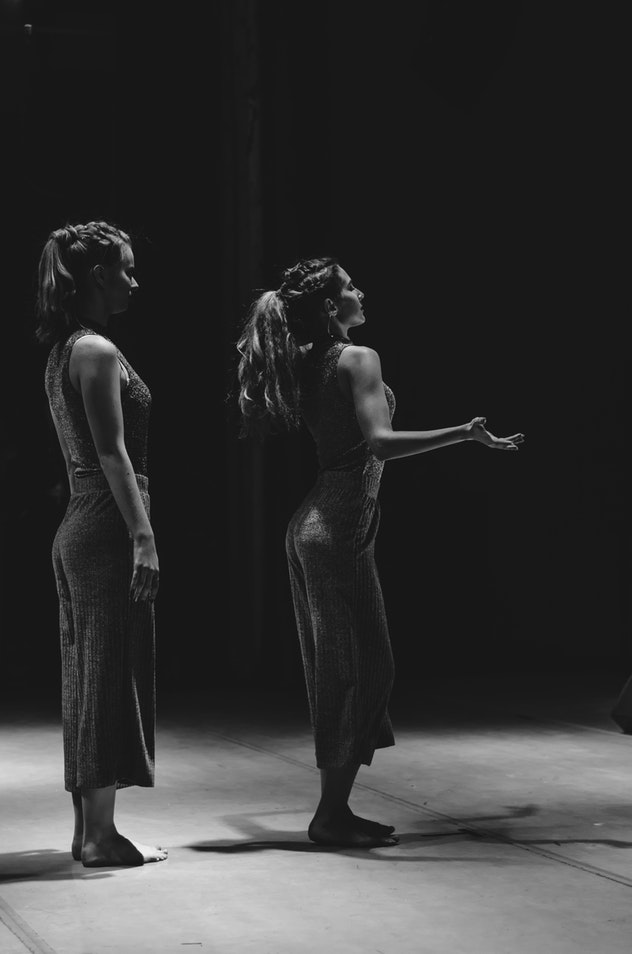
(Photo by Vadim Fomenok on Unsplash)
One of the most famous techniques used by actors is Method Acting, popularized by Stanislavski and later by actors like Marlon Brando and Daniel Day-Lewis. This technique requires actors to fully immerse themselves in their character’s emotions and experiences, often using personal memories and feelings to portray the character authentically. In some cases, actors even remain in character off-camera to maintain consistency.
3. Emotional Control Is Key
A skilled actor must be able to control their emotions and use them effectively to enhance their performance. This means not only accessing deep emotions on demand but also being able to snap in and out of them without losing focus. Actors train themselves to handle both intense emotions and the pressure of delivering a performance in front of a live audience or camera.
4. Voice Is an Essential Tool
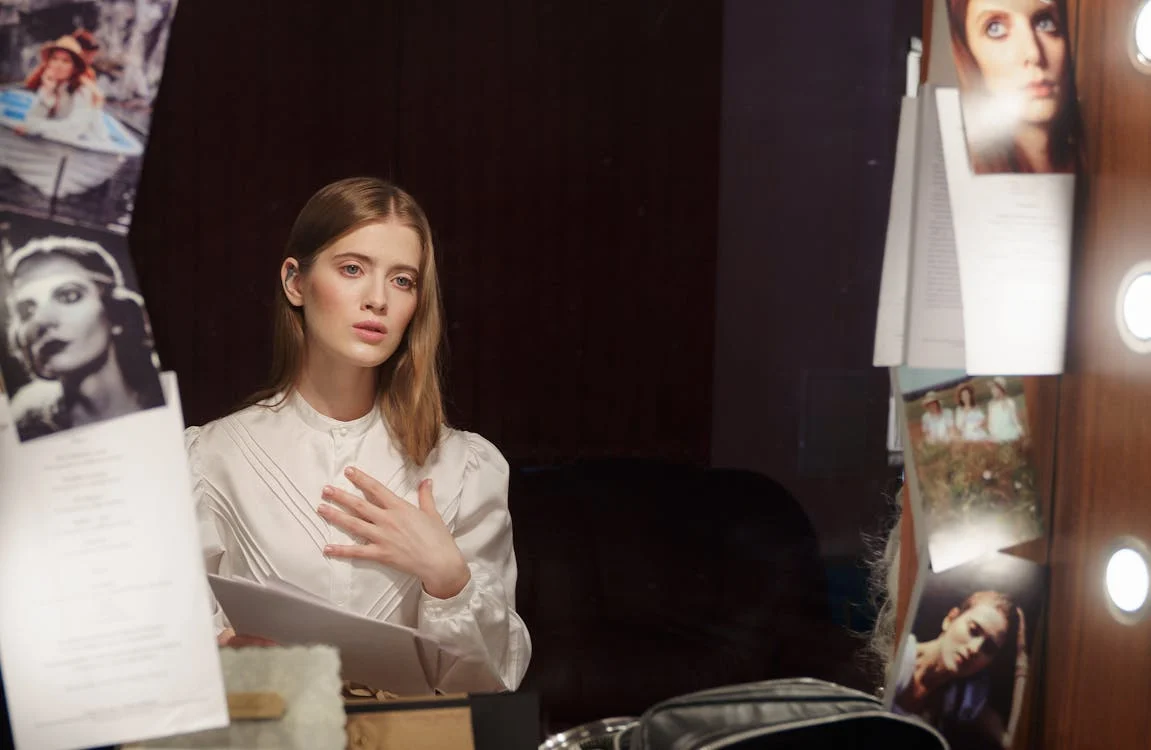 (Photo: Cottonbro | Pexels)
(Photo: Cottonbro | Pexels)
Acting isn’t just about what you say, but how you say it. An actor’s voice is a powerful tool in conveying emotion, intention, and meaning. Great actors know how to control their tone, pitch, and pace to create the right atmosphere or moment. Some actors even undergo specialized voice training to master accents or vocal nuances for particular roles.
5. The Art of Memorization
One of the biggest challenges for actors is memorizing lines. On average, an actor might memorize hundreds of lines for a stage play or movie, often under tight deadlines. Actors also need to learn their blocking (movement on stage or set) and cues, which makes memorization a multifaceted skill. Techniques like repetition, association, and understanding the meaning behind the lines help actors retain scripts.
6. Actors Often Perform in Front of Live Audiences
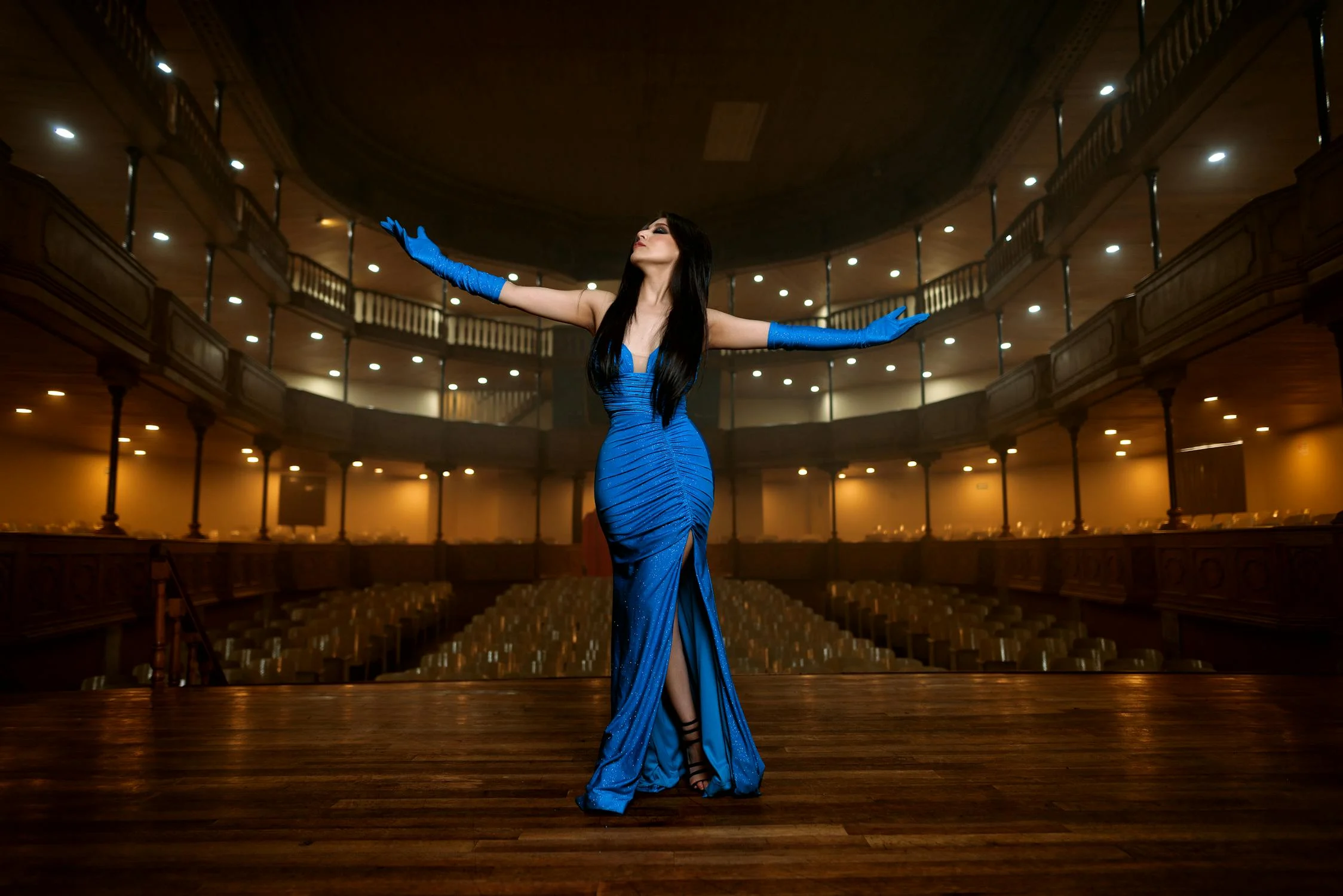 (Photo: Pitt Rom | Pexels)
(Photo: Pitt Rom | Pexels)
Although film and TV acting often take place behind the scenes, many actors start their careers in live theater. Acting on stage requires a unique set of skills, including projecting one’s voice, mastering timing, and adjusting to the immediate feedback from an audience. The live audience’s reactions can influence an actor’s performance, making every show feel different from the last.
7. Improvisation Is a Vital Skill
While scripts provide a foundation, improvisation is often a critical skill for actors. In theater, improv allows actors to adapt to unexpected changes, such as a forgotten line or a missed cue. In film, it can be used to add more depth or spontaneity to a scene. Great improvisers know how to stay in character while reacting to their environment and fellow actors.
8. Actors Use Body Language to Convey Emotion
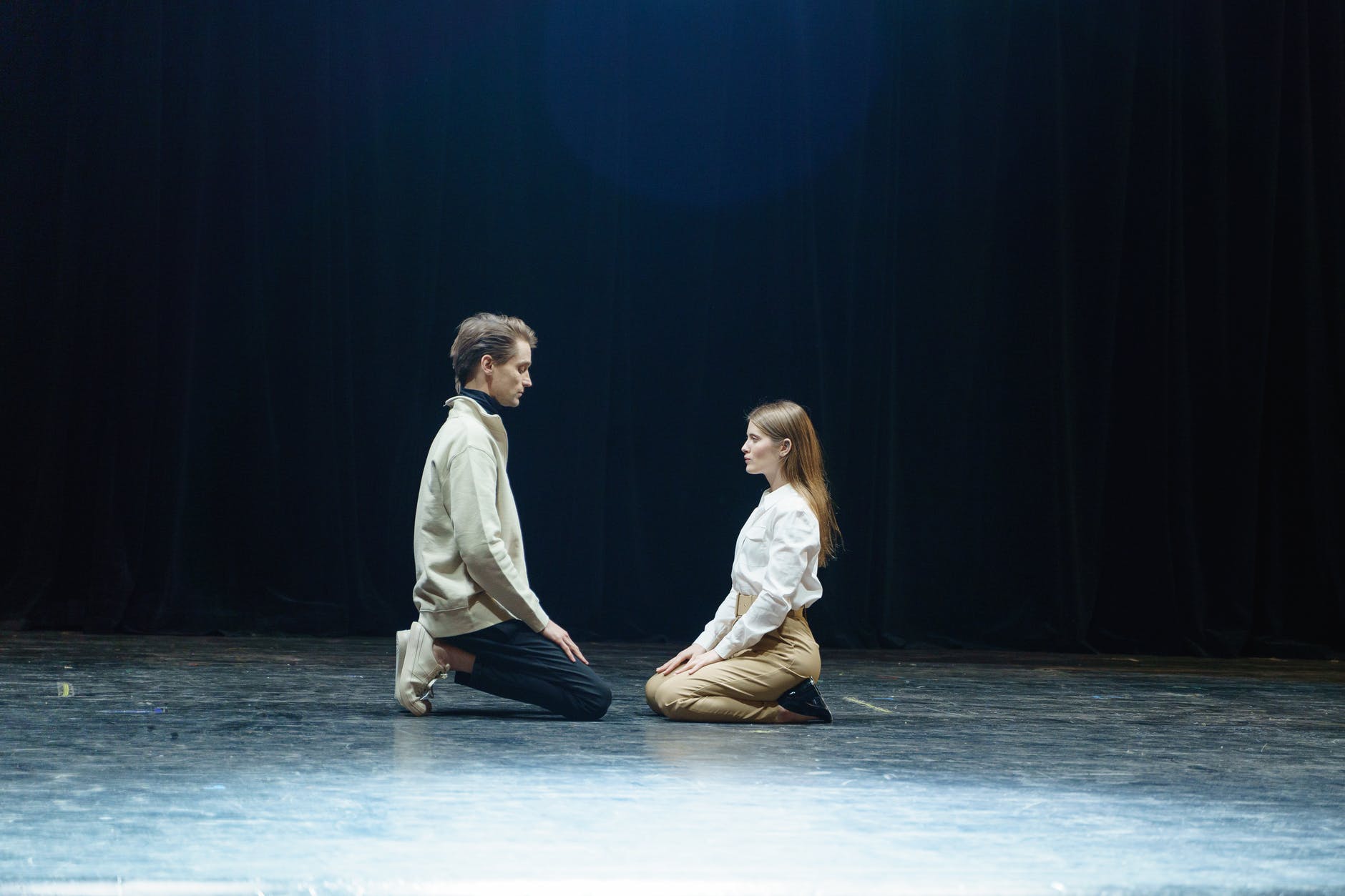 (Photo: Cottonbro | Pexels)
(Photo: Cottonbro | Pexels)
Non-verbal communication plays a huge role in acting. Body language—facial expressions, posture, gestures, and eye contact—can convey an actor’s inner thoughts and emotions without a single word being spoken. A raised eyebrow or a subtle movement can speak volumes, which is why actors often practice controlling and manipulating their physicality.
9. Auditions Are a Skill of Their Own
While being a talented actor is crucial, auditions are where it all begins. An actor’s ability to audition well can determine whether they get a role. It’s not just about performing; it’s about presenting yourself, understanding the character, and fitting into the vision of the director or casting team. Some actors prepare for months for just a few minutes in the audition room.
10. Actors Often Have Long and Varied Careers
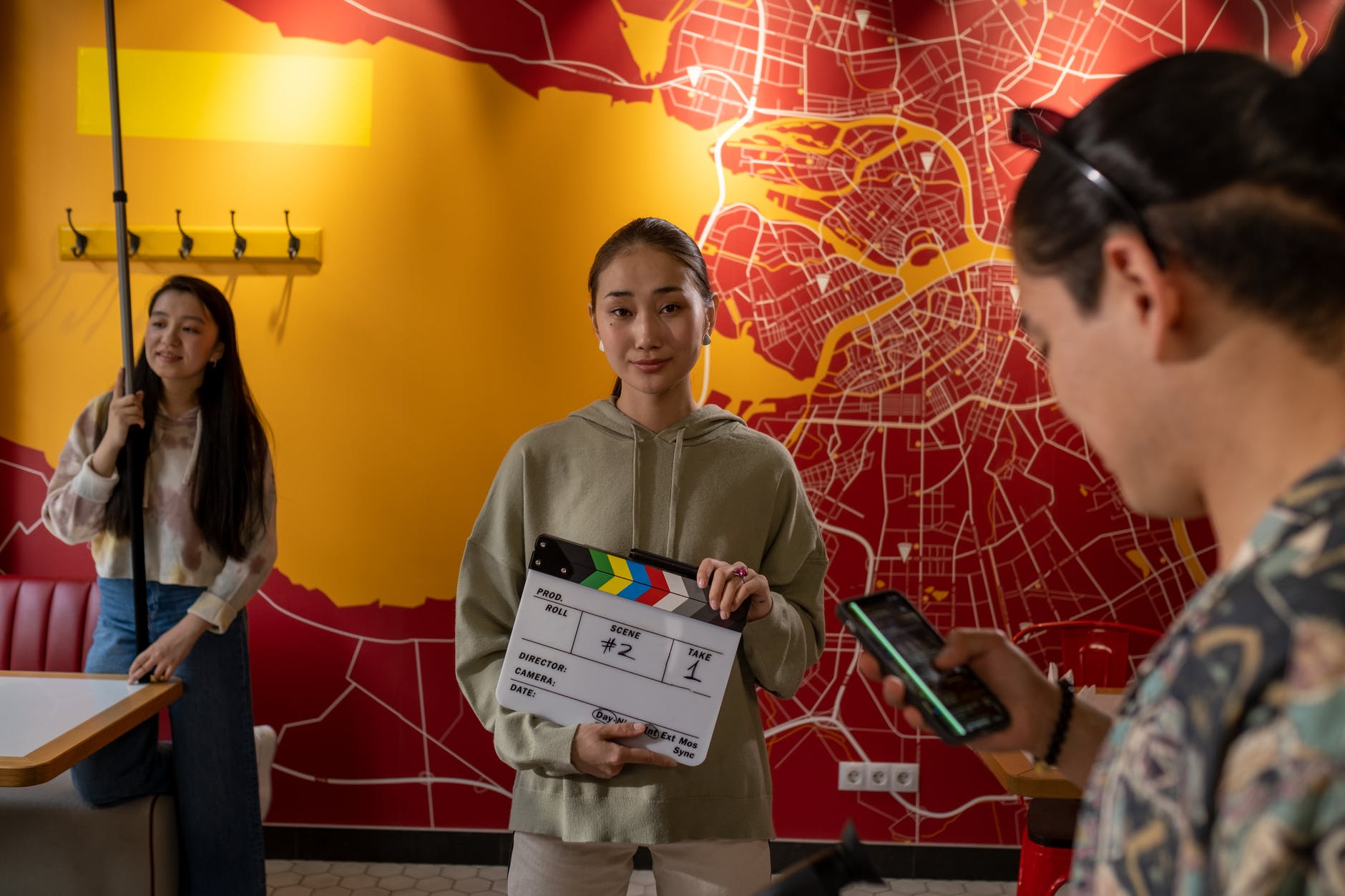 (Photo: Ron Lach | Pexels)
(Photo: Ron Lach | Pexels)
Many successful actors don’t just stick to one genre or type of performance throughout their careers. It’s common for actors to take on different roles in both film and theater or to switch from comedy to drama. This diversity helps them grow as performers and keeps their careers dynamic and interesting. Some actors even transition into directing or producing, further broadening their influence in the industry.
11. Acting Can Be Therapeutic
The emotional depth required for acting can sometimes provide therapeutic benefits. Some actors report that playing a character allows them to work through personal struggles or express emotions they may have difficulty expressing in real life. This cathartic aspect of acting can be a powerful tool for personal growth and healing.
12. Actors Are Often Highly Observant
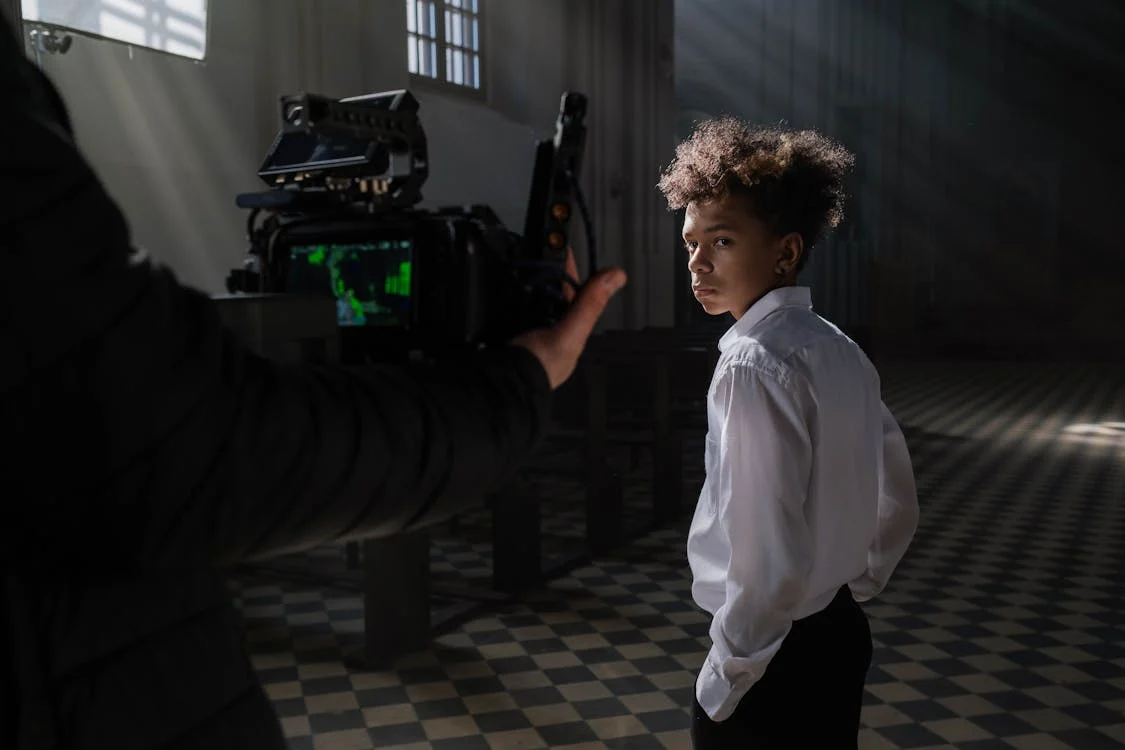 (Photo: Cottonbro Studio | Pexels)
(Photo: Cottonbro Studio | Pexels)
A great actor is a keen observer of the world around them. They pay attention to human behavior, emotions, speech patterns, and mannerisms to better embody a character. This observation helps them create more realistic, nuanced portrayals and allows them to draw from real-life experiences when developing their roles.
From its ancient roots to its modern-day complexities, acting is an ever-evolving craft. These interesting facts highlight just how much skill, dedication, and passion go into creating the performances we love. Whether on stage, on screen, or in front of a live audience, acting continues to captivate and inspire audiences around the world.
What is Fun About Acting?
**Exploring the Joys, Creativity, and Unpredictable Thrills of the Craft**
(By Carmichael Phillip)

The Joy of Transformation
One of the most exhilarating aspects of acting is the ability to transform into someone else. Actors can step into lives completely different from their own—experiencing emotions, cultures, and worlds they may never encounter in real life. This freedom to “become” is not only liberating but deeply fun.
Take Johnny Depp, for example. He’s played everything from the swashbuckling Captain Jack Sparrow to the eccentric Willy Wonka. In interviews, Depp has frequently mentioned how much joy he gets from disappearing into roles and building unique characters from scratch, using quirky voices and gestures that stretch beyond his own personality.
For many actors, this transformation is a playground for their imagination. It allows them to explore moral dilemmas, physical challenges, and emotional complexities in ways that can be both intense and wildly entertaining.
The Magic of Improvisation
Improvisation brings a delightful unpredictability to acting. Whether it’s in a comedy sketch or during a film shoot, when actors are given the freedom to play with their lines and actions, some of the most iconic and hilarious moments can happen.
One famous example is from the film The Dark Knight, when Heath Ledger, playing the Joker, begins clapping slowly and mockingly in a jail cell scene. That wasn’t in the script—it was a spontaneous choice by Ledger that fit the character perfectly and added a chilling layer to the performance.
In improv comedy troupes like Second City or Upright Citizens Brigade, actors play quick-thinking games and invent entire scenes on the spot. It’s like mental gymnastics combined with theater, and for many performers, it’s the most fun they can have on stage.
Playing Dress-Up (But for Adults)
Costumes, props, and makeup bring a whole new level of fun to acting. Whether it’s donning a superhero suit or getting decked out in 19th-century royal attire, actors get to explore different looks and physicalities with each role.
Zendaya, who has played everything from a high school student in Euphoria to a sci-fi warrior in Dune, has expressed how wearing a costume can instantly help her “step into” her character’s shoes. There’s something almost childlike in the thrill of dressing up—except now it’s on massive sets with professional stylists and Hollywood budgets.
Plus, the ability to physically become someone else—through hair, wardrobe, and makeup—can be as fun as the acting itself. Actors love experimenting with different looks, voices, and movements that arise naturally once they’re in costume.
Building Deep Connections
Acting also creates powerful emotional and social connections. During rehearsals and shoots, actors often form intense bonds with their co-stars, directors, and crew members.
The camaraderie on a film set or in a theater troupe is often described as familial. During the filming of The Lord of the Rings, for example, the main cast formed a tight-knit group that stayed close even after the trilogy was completed. Viggo Mortensen, Elijah Wood, and Orlando Bloom have spoken about the pranks they played, the dinners they shared, and the emotional support they gave one another through long months of shooting.
For actors, part of the fun is not just in the performance, but in the relationships built around it. The laughter, rehearsals, inside jokes, and shared successes make the journey even more enjoyable.
Getting to Play (Literally)
Acting is essentially grown-up play. In many ways, it’s a return to the imaginative games of childhood—pretending to be a pirate, a villain, a superhero, or a spy. Except now, the stakes are real, and the sets are much cooler.
Chris Pratt, who plays Star-Lord in Guardians of the Galaxy, has openly said that filming the action scenes feels like “being a 12-year-old with access to the world’s greatest toys.” Running from explosions, jumping off buildings (with stunt doubles, of course), and pretending to fly spaceships—what’s not fun about that?
Even in serious dramas, the play factor remains. Actors get to explore different reactions, experiment with delivery, and test emotional boundaries—all while “playing” their part.
Freedom of Expression
For many, acting is an outlet for self-expression. It allows people to channel personal experiences, emotions, and thoughts into a creative performance.
Viola Davis has spoken about how acting gave her the power to express pain, anger, and joy in ways that were healing and cathartic. She once said, “It’s a way to tell the truth… to expose yourself.” That level of emotional honesty can be scary, but it’s also incredibly freeing.
There’s something uniquely enjoyable about being able to express what’s inside—whether it’s through laughter, rage, tears, or silence—and have it resonate with others. For actors, that experience is not just therapeutic, it’s joyful.
Chasing the Unexpected
The unpredictability of acting is another fun factor. No two days are the same. One day might involve shooting on a mountaintop, and the next might require dancing in a crowded nightclub scene.
Because of this, acting is full of surprises. Scenes change. Directors pivot. Actors react. There’s always something new to adapt to, and that keeps things exciting.
During the filming of Titanic, for example, Leonardo DiCaprio and Kate Winslet often faced freezing temperatures and soggy costumes—but the challenge of getting through it made the scenes memorable and, in some cases, fun. They even laughed about slipping on the wet deck between takes.
The constant variation in challenges and locations makes acting a thrilling rollercoaster.
The Audience Reaction
Whether it’s a standing ovation or a burst of laughter, audience reaction can be a huge source of joy for actors. There’s an immediate rush when something you’ve done on stage or screen makes people feel something—whether it’s laughter, tears, or shock.
Stage actors, in particular, often talk about the energy exchange between performer and audience. That feedback loop can be addictive in the best way.
Robin Williams once said, “It’s the best high in the world when you make people laugh.” For many actors, that interaction is the ultimate payoff. It validates their hard work and amplifies the fun.
Learning New Skills
Another fun perk of acting? Picking up amazing new skills!
Depending on the role, actors might learn to fence, play piano, speak another language, or ride a horse. For example, Keanu Reeves trained extensively in martial arts and gun handling for the John Wick series. He’s said the training was hard—but also a lot of fun.
Every new role can come with its own learning curve, and for curious minds, that kind of on-the-job education is incredibly enjoyable.
Actors essentially get paid to learn and grow in the most dynamic way possible.
Living Multiple Lives
Perhaps the most poetic joy of acting is the ability to live many lives in one. Most people follow a single career path and identity, but actors can explore a kaleidoscope of lives: soldier, astronaut, chef, poet, villain, hero.
Meryl Streep has famously portrayed a wide range of characters—from British Prime Minister Margaret Thatcher to a singing Greek hotelier in Mamma Mia. She once said, “Acting is not about being someone different. It’s finding the similarity in what is apparently different, then finding myself in there.”
That process of discovery—finding yourself in the shoes of others—is deeply human and incredibly fun.
In Conclusion
Acting is more than just a profession—it’s a celebration of imagination, emotion, and connection. From transforming into different people to expressing hidden parts of yourself, acting offers an outlet that is challenging, meaningful, and—most of all—fun.
Whether it’s through improvisation, costumes, thrilling scenes, or emotional breakthroughs, actors get to live the kind of lives most people only dream about. And they do it all while playing, laughing, learning, and growing.
That, in the end, is what makes acting so irresistible.
What is a history fact about acting?
Exploring a fascinating journey from ancient rituals to the digital stage
(By Carmichael Phillip)
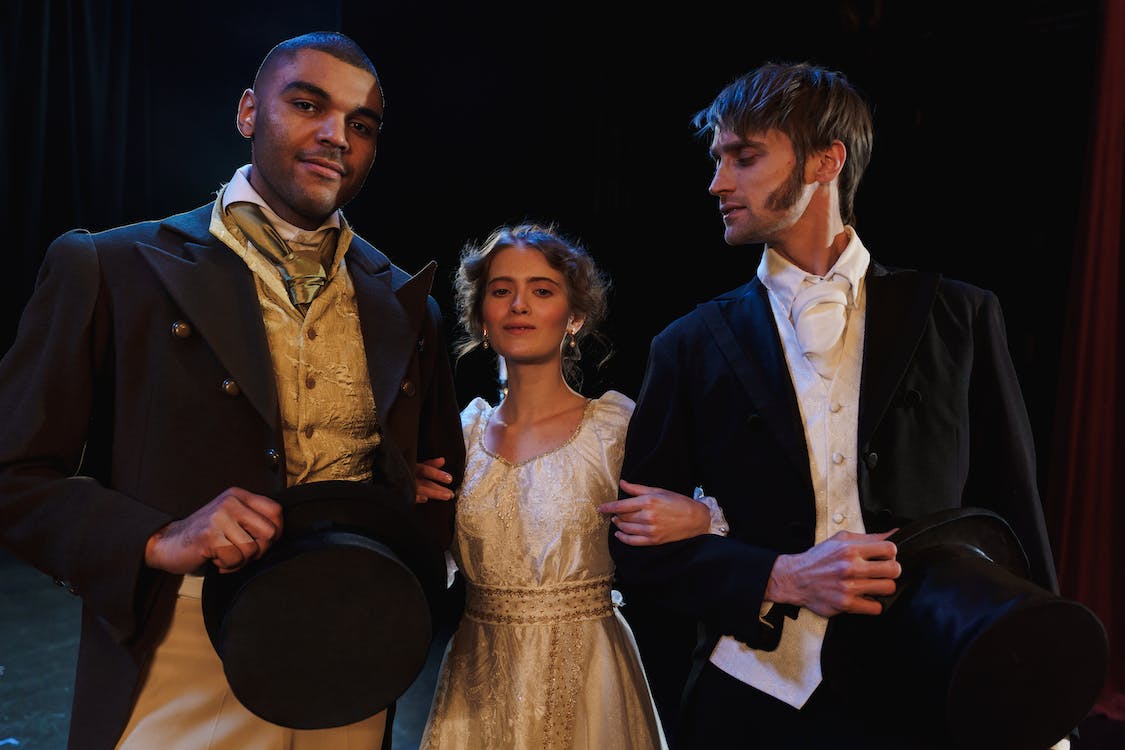
(Photo: Cottonbro | Pexels)
The Birth of Acting in Ancient Greece
One of the earliest and most influential facts about acting dates back to Ancient Greece in the 6th century BCE. It was during this time that a man named Thespis stepped out of the chorus during a performance and delivered lines as a solo character. This was a groundbreaking moment—Thespis essentially became the world’s first actor. In fact, the term “thespian,” used today to describe actors, is derived from his name.
Greek drama was not just entertainment—it was a cultural event deeply tied to religious festivals, particularly those dedicated to Dionysus, the god of wine and fertility. The open-air amphitheaters of the time were capable of holding thousands of people, and the use of masks allowed actors to portray multiple roles, often switching characters with incredible skill and agility.
For example, in the tragedy Oedipus Rex by Sophocles, actors wore expressive masks and used exaggerated gestures so that even spectators in the farthest seats could follow the emotional arc of the story. This form of acting laid the groundwork for dramatic storytelling that continues to influence theater and film today.
Roman Adaptations and the Rise of Spectacle
The Romans, inheriting and adapting Greek theater, brought acting to new heights—literally and figuratively. Roman performances were more spectacle-oriented, often performed in massive amphitheaters such as the Colosseum. While still rooted in traditional storytelling, the emphasis shifted toward action, music, and even special effects.
A notable development in Roman theater was the use of elaborate stage machinery and painted scenery. Acting became more physical and demonstrative, with actors often performing acrobatics or pantomimes. Unlike Greek theater, which emphasized moral and philosophical themes, Roman plays leaned toward comedies and farces that entertained the masses.
One famous Roman playwright was Plautus, whose comedies inspired many later works, including those of William Shakespeare. Characters like the braggart soldier or the clever slave became recurring archetypes that still pop up in modern sitcoms and sketch comedy.
Medieval Morality Plays and Religious Dramas
After the fall of the Roman Empire, theater all but disappeared in Europe during the early Middle Ages. But by the 10th century, acting found a new home in the Christian Church. This era saw the rise of morality plays, mystery plays, and miracle plays—dramatic performances used to teach Biblical stories and Christian values to largely illiterate populations.
A historical fact that stands out is the use of church steps and marketplaces as makeshift stages. These plays were often multilingual, blending Latin with local vernaculars, making them accessible to all social classes. Costumes were simple at first but evolved to include symbolic elements, like angel wings or devil horns, that helped define characters.
One of the most famous examples is the Second Shepherds’ Play, a medieval drama that blends religious themes with rustic comedy, reflecting how acting was beginning to move beyond strictly sacred storytelling and back toward entertainment.
Shakespeare and the Golden Age of English Theater
The 16th and early 17th centuries marked a golden age of acting in England, largely thanks to William Shakespeare. Acting companies such as The Lord Chamberlain’s Men performed in venues like the Globe Theatre to packed audiences. This era introduced new depth and complexity to character portrayal.
A crucial historical detail is that all actors were male, even for female roles. Teenage boys typically played women, wearing wigs and dresses while adopting high-pitched voices. This limitation forced actors to rely heavily on gestures, expressions, and vocal modulation to bring their characters to life.
Richard Burbage, one of Shakespeare’s leading men, became the original actor for roles like Hamlet, Othello, and King Lear. His performances were so celebrated that he helped elevate the status of actors in society—a major shift from the earlier notion of acting as a lowly profession.
The Emergence of Women on Stage
One transformative history fact about acting is the moment women were allowed to perform on stage. In England, this didn’t happen until 1660 with the Restoration of the monarchy under King Charles II. Before this time, women were banned from acting, and their roles were portrayed by men.
The appearance of women in theatrical roles was groundbreaking. One of the first professional actresses was Margaret Hughes, who played Desdemona in a production of Othello. This shift not only changed the dynamic of stage performances but also paved the way for complex female characters and romantic realism in plays.
France and Italy had allowed women on stage earlier, especially in Commedia dell’arte, a form of improvisational theater that featured stock characters like Columbina and Arlecchino. These performances emphasized physical comedy and spontaneity, traits that would later influence modern improv acting.
The Birth of Method Acting
In the 20th century, acting took a revolutionary turn with the development of Method Acting. This technique, influenced by Russian director Konstantin Stanislavski and refined by Lee Strasberg in the U.S., encouraged actors to fully immerse themselves in their characters by drawing on personal experiences and emotions.
One powerful historical example is Marlon Brando’s performance in A Streetcar Named Desire. Brando’s raw, emotionally charged acting marked a clear break from the theatrical, presentational style of earlier Hollywood performances. He brought an authenticity and vulnerability that had rarely been seen on screen.
Method Acting became the gold standard for many iconic actors, including Al Pacino, Robert De Niro, and later, Daniel Day-Lewis. It redefined what it meant to act, focusing on inner truth rather than outward performance.
Acting in the Silent Film Era
Before the advent of sound in cinema, actors in the silent film era had to rely entirely on physical expression. Over-exaggerated facial gestures, body language, and title cards conveyed the emotions and plot points.
A standout figure from this time is Charlie Chaplin, whose character “The Tramp” became a cultural icon. Despite never speaking on screen, Chaplin conveyed a wide range of emotions—from humor to heartbreak—purely through pantomime and music. His work illustrates the artistry of non-verbal acting and its power to resonate with audiences across cultures and languages.
Another key silent-era actor, Buster Keaton, was known for his stoic expression and daring physical stunts, many of which he performed himself. These pioneers shaped the foundation of film acting long before dialogue became a standard feature.
The Influence of Television and Streaming
In the modern era, acting has expanded across platforms, with television and streaming services offering new avenues for storytelling. What’s fascinating is how serialized TV has allowed actors to develop characters over extended periods, something that stage and film rarely offer.
Think of Bryan Cranston’s transformation in Breaking Bad from mild-mannered teacher to criminal mastermind—a performance widely praised for its nuance and depth. This kind of long-form acting lets performers build emotional arcs in intricate, layered ways.
Streaming platforms like Netflix, Hulu, and Amazon Prime have also globalized acting, introducing stars from different cultures to worldwide audiences. The Korean series Squid Game, for instance, showcased actors like Lee Jung-jae and Jung Ho-yeon, who achieved international fame nearly overnight.
Acting in the Digital and AI Age
One of the newest developments in acting history is the use of digital and AI technologies. Motion capture (or “mo-cap”) has allowed actors to portray fantastical beings and digital avatars. Andy Serkis’s work as Gollum in The Lord of the Rings trilogy is a milestone in this realm.
AI-generated actors and deepfake technology are now pushing boundaries further. Some recent projects have digitally resurrected actors, like Peter Cushing in Rogue One: A Star Wars Story, raising ethical questions about identity and performance.
Virtual reality and augmented reality are also creating interactive acting experiences, where audiences can engage with characters in real-time environments. These innovations challenge our traditional ideas of what it means to “act” and who—or what—can be considered an actor.
Conclusion: A Living, Evolving Art Form
From ritualistic chants in ancient Greece to AI-generated avatars on screen, acting has undergone a vast, colorful evolution. Each chapter in its history reflects broader social, cultural, and technological changes. What started as religious storytelling has grown into a global, billion-dollar industry touching every medium imaginable.
And yet, at its core, acting remains the art of becoming—of stepping into another’s shoes, feeling their joys and sorrows, and reflecting them back to an audience. As long as humans crave stories, the actor’s role in society will remain not just relevant, but essential.
What is a Fun Fact About Actors?
Discover the surprising, strange, and inspiring truths behind Hollywood’s brightest stars.
(By Carmichael Phillip)
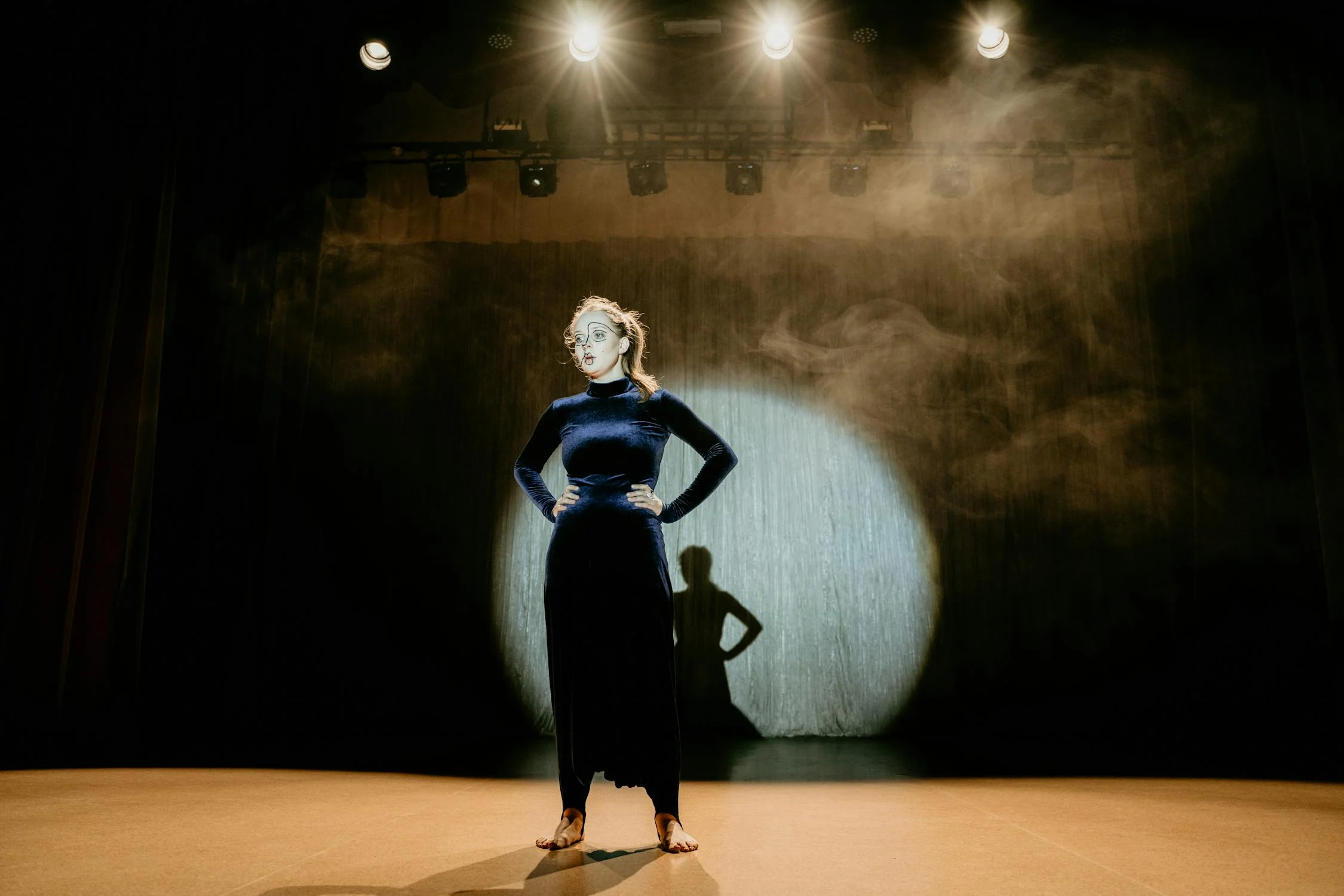 (Photo: Tima Miroshnichenko | Pexels)
(Photo: Tima Miroshnichenko | Pexels)
Some Actors Have Secret Talents You’d Never Expect
Many actors aren’t just talented on screen — they also possess remarkable skills in other areas. For example, Harrison Ford is a licensed pilot who has rescued stranded hikers with his helicopter. That’s right — Indiana Jones and a real-life rescuer!
Another fun fact? Christopher Lee, famous for playing Count Dooku in Star Wars and Saruman in The Lord of the Rings, was a heavy metal singer in his 90s. He released full heavy metal albums, combining his love for literature and opera with powerful vocals that rival younger rockers.
Actors like Margot Robbie surprise fans with unusual hobbies too. Robbie is a tattoo artist and once admitted to giving her Suicide Squad co-stars ink on set, even using a foot pedal machine she bought online.
Some Iconic Roles Were Almost Played by Completely Different People
Here’s a jaw-dropping truth: Will Smith turned down the role of Neo in The Matrix. Instead, he starred in Wild Wild West, a film that was critically panned. Keanu Reeves got the role and made cinematic history — and fans are still grateful.
Similarly, Tom Hanks wasn’t the first choice for Forrest Gump. The role was offered to John Travolta, who turned it down — something he later admitted was a mistake. Hanks went on to win an Oscar for the part, and the film became a cultural phenomenon.
Emily Blunt was originally cast as Black Widow before Scarlett Johansson. Blunt had to drop out due to scheduling conflicts. That twist of fate helped shape the entire Marvel Cinematic Universe as we know it.
Some Actors Are Masters of Disguise — Even in Real Life
Actors are skilled at slipping into different roles, but some take it to the next level off-screen. Daniel Radcliffe once dressed as Spider-Man to avoid paparazzi while walking around New York. Another time, he wore the exact same outfit for multiple days so that paparazzi photos would look identical and become worthless.
Johnny Depp is known for his eccentric characters, but did you know he often visits children’s hospitals dressed as Captain Jack Sparrow? He stays in character the entire time, entertaining sick kids with his pirate antics.
Sacha Baron Cohen, who created characters like Borat and Ali G, often interviews real people in complete disguise. Many of his subjects don’t realize they’re part of a comedy bit until the film premieres.
Some Actors Do Their Own Dangerous Stunts
We all know Tom Cruise is famous for doing his own stunts — but the extent of his dedication is jaw-dropping. In Mission: Impossible – Fallout, he learned to fly a helicopter and performed a dangerous aerial sequence himself. He also scaled the world’s tallest building, the Burj Khalifa, in Ghost Protocol.
Jackie Chan takes it a step further — he performs nearly all his stunts and has broken almost every bone in his body. In Police Story, he slid down a pole covered in lights, burning his hands and nearly paralyzing himself. He still finished the scene.
Even comedic actors get serious: Jim Carrey trained in real martial arts for his role as the Riddler and later for Kick-Ass 2. His dedication to physical comedy has led to real injuries — but also real laughs.
Many Actors Start as Extras or Background Performers
Before they were famous, many stars appeared in blink-and-you’ll-miss-it roles. Brad Pitt was once an uncredited extra in Less Than Zero. Renée Zellweger was a background college student in Dazed and Confused.
Channing Tatum first appeared in a Ricky Martin music video before scoring his breakout role in Step Up. And Clint Eastwood? He started with minor roles in sci-fi B-movies before becoming a Western legend.
Their early roles prove that persistence — and humility — are part of the journey to stardom.
Some Actors Changed Their Names — and You’d Never Know
Hollywood has always been about reinvention. Natalie Portman was born Neta-Lee Hershlag. Michael Keaton was born Michael Douglas — but changed it to avoid confusion with the other famous actor of the same name.
Emma Stone’s real name is Emily. She had to switch because another “Emily Stone” was already registered with the Screen Actors Guild. She considered “Riley Stone” before settling on Emma.
And then there’s Vin Diesel, whose birth name is Mark Sinclair. “Vin Diesel” sounded tougher — and helped him land more action roles.
Some Actors Had Completely Different Careers First
Before the spotlight, many actors were living very different lives. Danny DeVito trained as a hairdresser. Hugh Jackman was a physical education teacher. Sylvester Stallone cleaned lion cages at a zoo and acted in soft-core films before breaking out with Rocky.
Steve Buscemi was a New York City firefighter. After 9/11, he returned to his old firehouse to help search for survivors. His bravery extended far beyond the screen.
And Ken Jeong, known for The Hangover, is actually a licensed physician. He still maintains his medical license and has saved lives during emergencies on set.
Some Child Actors Left the Spotlight for Totally New Lives
Not all actors stay in the game. Mara Wilson, famous for Matilda, left acting to become a writer. She now pens essays and books about mental health and childhood fame.
Frankie Muniz from Malcolm in the Middle shifted his focus to race car driving and now runs a small business. Angus T. Jones from Two and a Half Men left Hollywood for a spiritual journey and currently works in a tech startup.
These stars show that sometimes walking away from fame can be the biggest power move.
Actors Have Bizarre Superstitions and Rituals
The entertainment industry is full of quirks. Nicolas Cage once bought a haunted house in New Orleans — for “inspiration.” He also owns a pyramid-shaped tomb where he plans to be buried.
Daniel Day-Lewis, known for his intense method acting, reportedly built a canoe by hand and lived in the woods to prepare for The Last of the Mohicans.
Even light-hearted stars have rituals: Reese Witherspoon always eats the same meal before shooting a major scene — grilled chicken and vegetables. It’s her good luck charm.
Actors Sometimes Turn Down Huge Paychecks for Art
While some chase money, others pursue meaning. George Clooney famously turned down $35 million for a single day’s work in an airline ad, saying the company didn’t align with his values.
Keanu Reeves gave away most of his Matrix earnings — over $75 million — to the special effects and costume teams who helped make the film iconic. He also bought Harley-Davidson motorcycles for each stuntman on set.
And Jennifer Lawrence took a pay cut for Silver Linings Playbook because she believed in the story. That decision earned her an Oscar.
How Long Has Acting Existed?
Tracing the Ancient Roots and Modern Evolution of Performance Art
(By Carmichael Phillip)
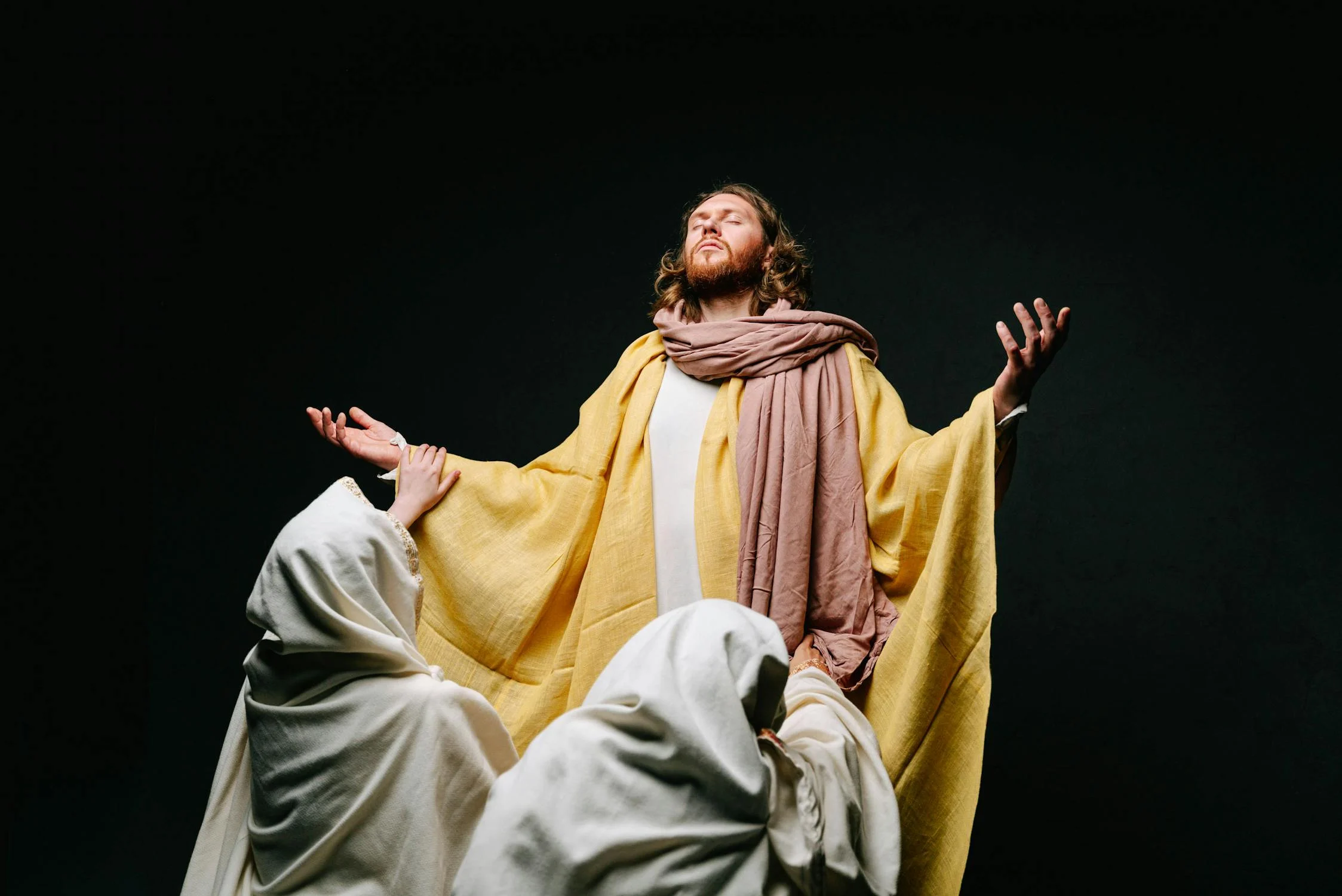 (Photo: Ivan Samkov | Pexels)
(Photo: Ivan Samkov | Pexels)
The Birth of Acting in Ritual and Ceremony
Acting, in its most primal form, predates recorded history. Before there were scripts or stages, human beings mimicked the world around them—animals, enemies, gods—through movement and voice. This was not done for entertainment, but for spiritual, cultural, or communicative purposes. Early humans used impersonation as part of shamanistic and religious ceremonies, with performers adopting roles to represent deities or forces of nature.
Anthropologists have uncovered evidence of these practices dating back tens of thousands of years. For instance, the ancient Aboriginal Dreamtime rituals in Australia often featured storytelling through dance and mimicry. These sacred performances conveyed moral lessons, historical events, and spiritual truths long before formal theater developed.
In sub-Saharan Africa and among Native American tribes, performers often used masks and costumes to channel spirits and ancestors—an early sign of what we now recognize as “taking on a role.” In these cultures, performance was a form of social glue, connecting past to present and the community to the cosmos.
Ancient Egypt and the Theatrical Foundations
Ancient Egypt offers some of the first documented examples of organized dramatic performances. As early as 2500 BCE, Egyptians held religious pageants that dramatized myths, particularly the story of Osiris, the god of the afterlife. These rituals, performed annually, involved scripted action, costumes, and set choreography.
The “Abydos Passion Play” is among the oldest recorded theatrical events. Taking place near the temple of Osiris in Abydos, this ceremonial drama reenacted the murder and resurrection of the god, featuring a clear narrative arc, characters, and symbolic performances. While it may not align perfectly with modern acting definitions, its core elements—characterization, storytelling, and audience—are unmistakably theatrical.
Greece: The Birthplace of Western Theater
When asking “How long has acting existed?” many historians point to ancient Greece as the true genesis of professional acting as we understand it today. In the 6th century BCE, Thespis of Icaria is credited as the first actor to step away from the chorus and portray an individual character. His innovation gave rise to the term “Thespian,” which is still synonymous with actor.
Greek theater festivals, particularly those honoring Dionysus, became grand public events. These productions had defined scripts, multiple actors, masks, and elaborate costumes. Sophocles, Aeschylus, and Euripides are among the most celebrated playwrights of the time, each contributing to the rich theatrical tradition.
One famous example is Oedipus Rex by Sophocles, a play that demanded emotional range and deep character understanding—proof that acting had evolved into a respected art form. Actors were held in high regard and often had state support.
The use of amphitheaters, such as the Theatre of Epidaurus, demonstrates the sophistication of Greek stagecraft. The acoustics of these spaces allowed even whispers to reach thousands of audience members, enabling more nuanced performance.
Roman Theater: Spectacle and Storytelling
The Romans inherited much from Greek theater but added their flair. Roman actors, or histriones, performed both tragedies and comedies in venues like the Theatre of Pompey and the Colosseum. While often criticized for favoring spectacle over substance, Roman performances were widespread and influential.
One key difference was the inclusion of more physical comedy, improvisation, and even mime. The Atellan Farce and works by Plautus and Terence provided the groundwork for many comedic tropes still used today, like mistaken identity, love triangles, and clever servants.
Despite acting’s popularity, Roman actors were not always respected. Many were considered low-status citizens or even slaves, though their performances were adored by the masses. This contradiction reveals a tension that acting would grapple with for centuries—artistic acclaim vs. social disdain.
The Middle Ages: Morality and Mystery Plays
After the fall of Rome, acting experienced a decline in Western Europe, especially as the Christian Church viewed theatrical performance with suspicion. However, acting never truly disappeared. Instead, it transformed into religious storytelling through morality, miracle, and mystery plays.
These performances, often enacted in town squares or churchyards, brought biblical tales and moral lessons to illiterate populations. One iconic example is the York Mystery Plays, a cycle of 48 pageants performed in medieval England, covering everything from the Creation to the Last Judgment.
Though rooted in religious tradition, these performances required considerable acting skill. Characters like the Devil, Noah, and Jesus demanded emotional shifts, physicality, and memorization—hallmarks of an actor’s craft. Guilds and communities took pride in their performances, sowing the seeds for secular acting’s return during the Renaissance.
The Renaissance and the Rise of Professional Actors
The Renaissance, beginning in 14th-century Italy, reignited interest in the arts, including acting. This era saw the birth of commedia dell’arte, an improvisational form of theater performed by traveling troupes. With stock characters like Harlequin, Pantalone, and Columbina, commedia required physical comedy and character consistency—an early form of character acting.
England, too, became a center of theatrical innovation. William Shakespeare’s works in the late 16th and early 17th centuries elevated acting to new heights. The Globe Theatre became a cultural beacon, and actors like Richard Burbage became stars in their own right.
This period also introduced the concept of the professional actor—someone who earned a living by performing roles. Acting companies gained sponsorship from nobility, such as the Lord Chamberlain’s Men, proving that acting was evolving into a viable, even prestigious, career.
The 18th and 19th Centuries: Acting as Art
By the 18th century, acting was no longer just entertainment—it was art. The rise of the proscenium stage and the curtain allowed for more realistic settings and performances. Actors like David Garrick and Sarah Siddons emphasized emotional realism, bringing depth and humanity to their characters.
In France, Denis Diderot argued for a new style of acting that relied on observation and controlled technique rather than spontaneous emotion. This philosophical shift led to more structured acting methods and formal training schools.
The 19th century welcomed melodrama and romanticism. Audiences were drawn to intense, larger-than-life characters, but realism soon followed. Henrik Ibsen’s plays, like A Doll’s House, demanded subtlety and introspection—qualities that set the stage for modern acting.
The 20th Century and Method Acting
The 20th century revolutionized acting. Constantin Stanislavski, a Russian theater practitioner, developed a system emphasizing emotional truth and psychological realism. His ideas deeply influenced American acting, especially through Lee Strasberg’s Method Acting.
Actors like Marlon Brando, James Dean, and later, Daniel Day-Lewis used this technique to fully immerse themselves in roles. Brando’s performance in A Streetcar Named Desire (1951) marked a turning point—raw, natural, and emotionally potent, far removed from theatrical declamation.
The invention of film also changed acting forever. Close-ups required a subtler, more nuanced performance style. Stars like Charlie Chaplin, Greta Garbo, and later, Meryl Streep mastered the camera, blending theatrical training with cinematic sensitivity.
Acting in the 21st Century
Today, acting exists in countless forms: stage, film, television, voice acting, motion capture, virtual reality, and more. The tools may change, but the essence remains—stepping into someone else’s shoes to tell a story.
Modern training includes everything from classical techniques to improvisation, method, Meisner, and even clowning. Actors like Cate Blanchett, Mahershala Ali, and Viola Davis exemplify the ongoing excellence and adaptability of the craft.
Technology has also expanded opportunities for actors, including AI-assisted performances and digital avatars. Yet, audiences still crave the human connection that authentic acting provides.
An Eternal Craft
So how long has acting existed? As long as humans have needed to express, teach, connect, and dream. From ancient rituals to digital cinema, acting has evolved, but its heart remains unchanged. It is storytelling made flesh, empathy in motion, and perhaps the oldest art form still thriving in every corner of the world.
Whether it’s a cave dweller mimicking the hunt or a Hollywood star transforming into a historical icon, the actor continues to be a vessel for human truth. And as long as there are stories to tell, acting will endure.



